MIT-BIH Arrhythmia (48 records)
The MIT-BIH Arrhythmia Database contains 48 fully annotated half-hour excerpts of two-channel ambulatory ECG recordings, obtained from 47 subjects studied by the BIH Arrhythmia Laboratory between 1975 and 1979. Twenty-three recordings were chosen at random from a set of 4000 24-hour ambulatory ECG recordings collected from a mixed population of inpatients (about 60%) and outpatients (about 40%) at Boston's Beth Israel Hospital; the remaining 25 recordings were selected from the same set to include less common but clinically significant arrhythmias that would not be well-represented in a small random sample. more...
The first group is intended to serve as a representative sample of the variety of waveforms and artifact that an arrhythmia detector might encounter in routine clinical use. Records in the second group were chosen to include complex ventricular, junctional, and supraventricular arrhythmias and conduction abnormalities. Several of these records were selected because features of the rhythm, QRS morphology variation, or signal quality may be expected to present significant difficulty to arrhythmia detectors; these records have gained considerable notoriety among database users.
The subjects were 25 men aged 32 to 89 years, and 22 women aged 23 to 89 years. (Records 201 and 202 came from the same male subject.)
The recordings were digitized at 360 samples per second per channel with 11-bit resolution over a 10 mV range. Two or more cardiologists independently annotated each record; disagreements were resolved to obtain the computer-readable reference annotations for each beat (approximately 110,000 annotations in all) included with the database.
For more information:
- http://www.physionet.org/physiobank/database/mitdb/
- MIT-BIH Arrhythmia Database Directory: http://www.physionet.org/physiobank/database/html/mitdbdir/mitdbdir.htm
- Moody GB, Mark RG. The impact of the MIT-BIH Arrhythmia Database. IEEE Eng in Med and Biol 20(3):45-50 (May-June 2001). (PMID: 11446209)
- Goldberger AL, Amaral LAN, Glass L, Hausdorff JM, Ivanov PCh, Mark RG, Mietus JE, Moody GB, Peng C-K, Stanley HE. PhysioBank, PhysioToolkit, and PhysioNet: Components of a New Research Resource for Complex Physiologic Signals. Circulation 101(23):e215-e220 [Circulation Electronic Pages; http://circ.ahajournals.org/cgi/content/full/101/23/e215]; 2000 (June 13).
This database has 48 records
-

- Record 222
Age:
84Sex:
FemaleMedication:
Digoxin, Quinidine
-

- Record 223
Age:
73Sex:
MaleMedication:
None
-
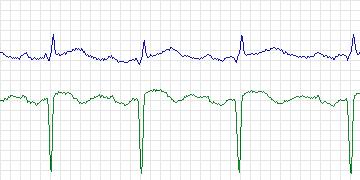
- Record 228
Age:
80Sex:
FemaleMedication:
Digoxin, Norpace
-
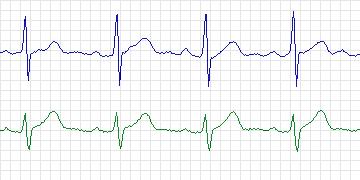
- Record 230
Age:
32Sex:
MaleMedication:
Dilantin
-
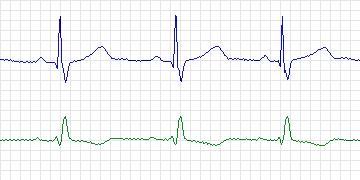
- Record 231
Age:
72Sex:
FemaleMedication:
None
-
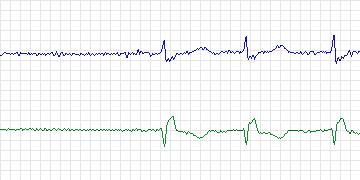
- Record 232
Age:
76Sex:
FemaleMedication:
Aldomet, Inderal
-
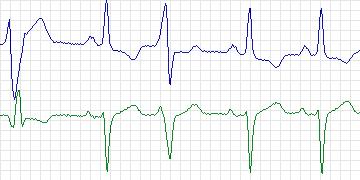
- Record 233
Age:
57Sex:
MaleMedication:
Dilantin
-

- Record 234
Age:
56Sex:
FemaleMedication:
None